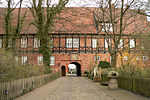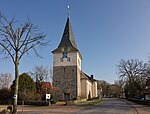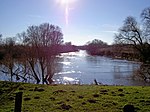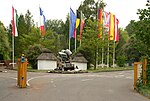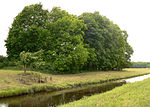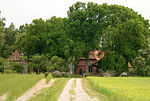Bunkenburg
Buildings and structures in HeidekreisCastles in Lower SaxonyHill forts in GermanyLowland castlesLüneburg Heath

Bunkenburg was a castle built during the 13th and 14th centuries in the shape of a circular fort located on the banks of the Aller opposite Ahlden in north Germany. Only a section of the rampart, roughly 60 metres long and 3 metres high, exists today. The name of the castle is probably derived from the material, bog iron, used for its construction and known in common parlance as Bunke.
Excerpt from the Wikipedia article Bunkenburg (License: CC BY-SA 3.0, Authors, Images).Bunkenburg
Allerstraße, Samtgemeinde Ahlden
Geographical coordinates (GPS) Address External links Nearby Places Show on map
Geographical coordinates (GPS)
| Latitude | Longitude |
|---|---|
| N 52.76149 ° | E 9.55867 ° |
Address
Bunkenburg
Allerstraße
29693 Samtgemeinde Ahlden
Lower Saxony, Germany
Open on Google Maps
